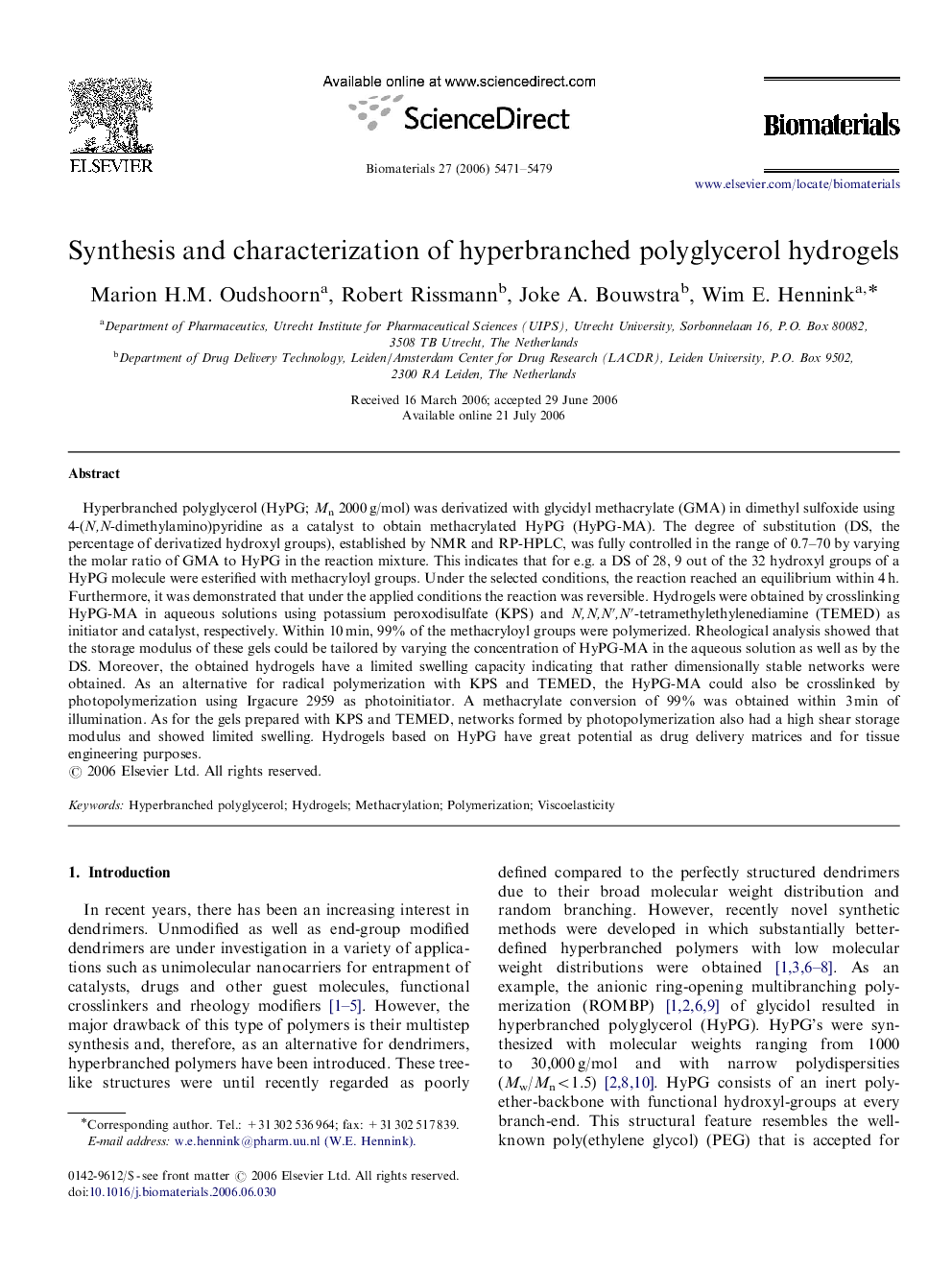| Article ID | Journal | Published Year | Pages | File Type |
|---|---|---|---|---|
| 11228 | Biomaterials | 2006 | 9 Pages |
Hyperbranched polyglycerol (HyPG; Mn 2000 g/mol) was derivatized with glycidyl methacrylate (GMA) in dimethyl sulfoxide using 4-(N,N-dimethylamino)pyridine as a catalyst to obtain methacrylated HyPG (HyPG-MA). The degree of substitution (DS, the percentage of derivatized hydroxyl groups), established by NMR and RP-HPLC, was fully controlled in the range of 0.7–70 by varying the molar ratio of GMA to HyPG in the reaction mixture. This indicates that for e.g. a DS of 28, 9 out of the 32 hydroxyl groups of a HyPG molecule were esterified with methacryloyl groups. Under the selected conditions, the reaction reached an equilibrium within 4 h. Furthermore, it was demonstrated that under the applied conditions the reaction was reversible. Hydrogels were obtained by crosslinking HyPG-MA in aqueous solutions using potassium peroxodisulfate (KPS) and N,N,N′,N′-tetramethylethylenediamine (TEMED) as initiator and catalyst, respectively. Within 10 min, 99% of the methacryloyl groups were polymerized. Rheological analysis showed that the storage modulus of these gels could be tailored by varying the concentration of HyPG-MA in the aqueous solution as well as by the DS. Moreover, the obtained hydrogels have a limited swelling capacity indicating that rather dimensionally stable networks were obtained. As an alternative for radical polymerization with KPS and TEMED, the HyPG-MA could also be crosslinked by photopolymerization using Irgacure 2959 as photoinitiator. A methacrylate conversion of 99% was obtained within 3 min of illumination. As for the gels prepared with KPS and TEMED, networks formed by photopolymerization also had a high shear storage modulus and showed limited swelling. Hydrogels based on HyPG have great potential as drug delivery matrices and for tissue engineering purposes.
